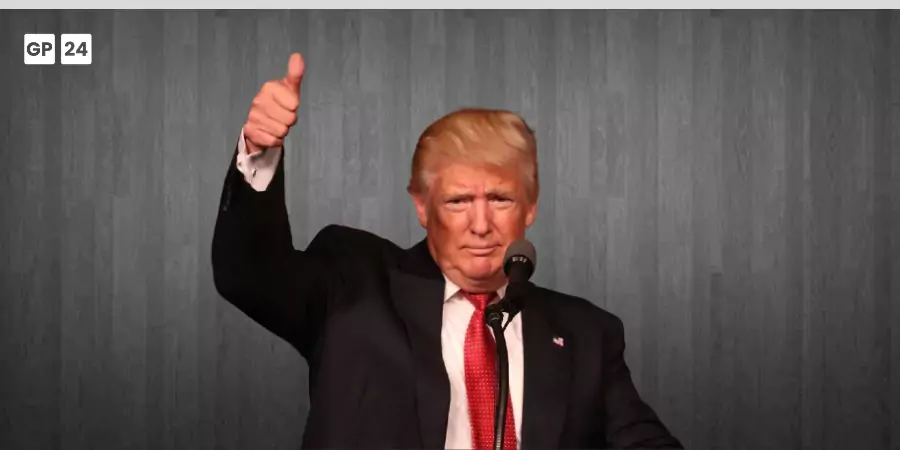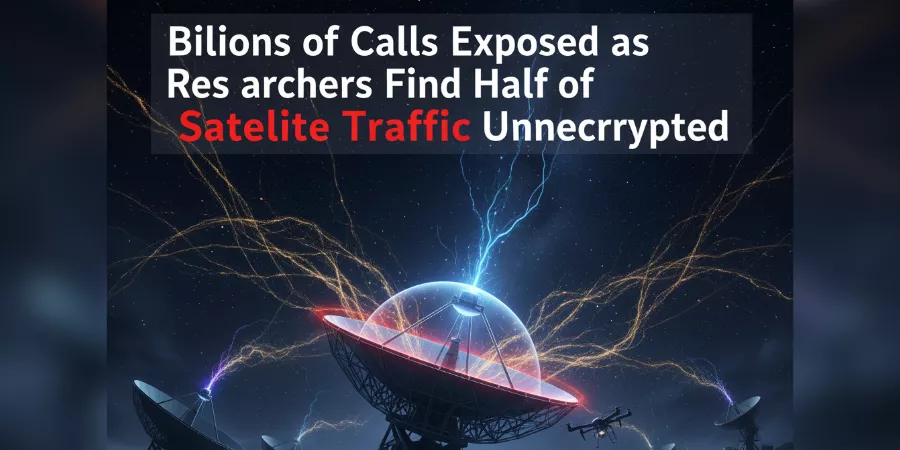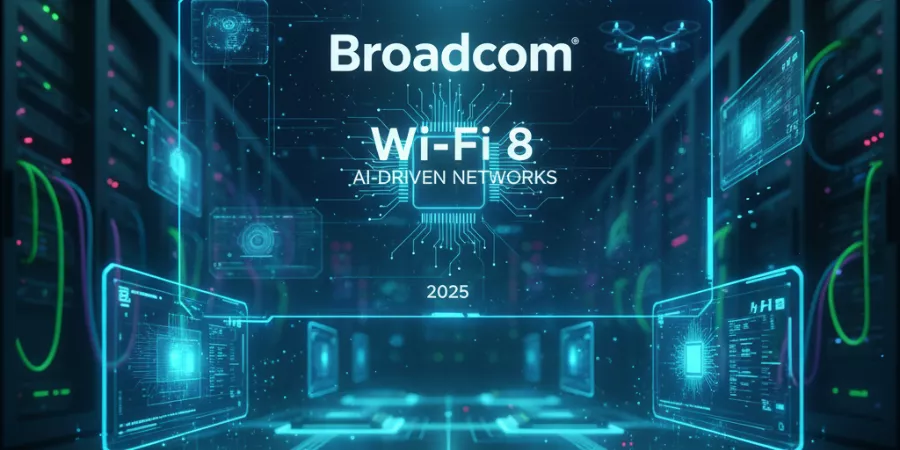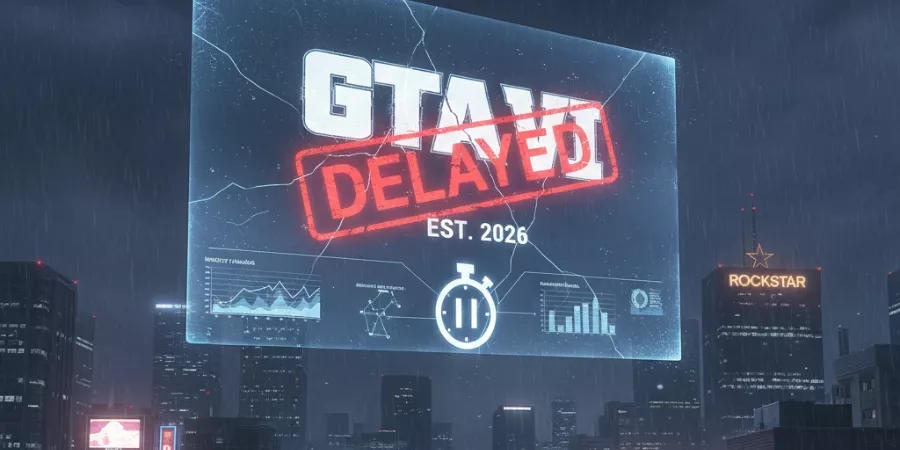Presidential inaugurations represent among the most significant ceremonial occasions in American democracy, marking peaceful transitions of power through constitutional processes that have continued uninterrupted for over two centuries. When Donald Trump takes the oath of office as the 47th President of the United States, the ceremony will follow traditions established by George Washington in 1789 while occurring within unique historical circumstances Trump becoming only the second president in American history to serve non-consecutive terms after losing reelection. Understanding presidential inaugurations requires examining their constitutional foundations, historical evolution, ceremonial components, symbolic significance, and function as policy agenda-setting opportunities that shape public expectations for incoming administrations. This comprehensive analysis explores how inaugurations balance constitutional requirements with political ceremony, their role in democratic transitions, and their significance for governance and national unity.
Constitutional Foundations and Legal Requirements
Presidential inaugurations derive from specific constitutional provisions establishing presidential terms and oath requirements while leaving ceremonial aspects to tradition and statute.
Constitutional Provisions Governing Presidential Terms
The Constitution’s Article II, Section 1 establishes the presidency’s basic structure, while subsequent amendments have refined presidential term parameters:
Original Constitutional Text: “The executive Power shall be vested in a President of the United States of America. He shall hold his Office during the Term of four Years…”
This provision establishes four-year presidential terms without initially limiting the number of terms a president could serve.
Twentieth Amendment (1933): “The terms of the President and Vice President shall end at noon on the 20th day of January…and the terms of their successors shall then begin.”
Prior to this amendment, presidential terms began March 4 a four-month gap from November elections that the amendment reduced to approximately two and a half months, enabling more efficient governmental transitions.
Twenty-Second Amendment (1951): “No person shall be elected to the office of the President more than twice, and no person who has held the office of President, or acted as President, for more than two years of a term to which some other person was elected President shall be elected to the office of President more than once.”
Ratified following Franklin Roosevelt’s unprecedented four-term presidency, this amendment limits presidents to two elected terms or one elected term plus up to two years of an inherited term though it explicitly doesn’t prevent non-consecutive term service.
The Presidential Oath of Office
Article II, Section 1 specifies the exact oath language one of the Constitution’s few verbatim requirements:
“I do solemnly swear (or affirm) that I will faithfully execute the Office of President of the United States, and will to the best of my Ability, preserve, protect and defend the Constitution of the United States.”
Oath Significance:
This 35-word oath represents the sole constitutional requirement for assuming presidential powers. Everything else about inaugurations the ceremony, the chief justice administering the oath, the inaugural address, the celebrations exists through tradition rather than constitutional mandate.
The oath’s phrasing emphasizes constitutional fidelity over policy preferences or partisan loyalty. Presidents swear to “preserve, protect and defend the Constitution” not a political party, specific policies, or even “the American people” directly, but rather the constitutional framework itself.
Legal Effect and Power Transfer
Presidential power transfers precisely at noon on January 20, regardless of whether oath administration has occurred. The constitutional amendment specifies terms “shall end” and successors’ terms “shall then begin” at that moment making the oath ceremonial confirmation of power already transferred rather than the power transfer mechanism itself.
This technicality mattered during Dwight Eisenhower’s 1957 inauguration, which fell on a Sunday. Rather than holding public ceremony on the Sabbath, Eisenhower took a private oath Sunday at the constitutionally-required moment, with public ceremony following Monday.
Historical Evolution of Inaugural Ceremonies
While constitutional requirements remain constant, inaugural ceremonies have evolved substantially from George Washington’s first inauguration through contemporary practices.
Early Inaugurations and Tradition Establishment
George Washington (1789): The first presidential inauguration established enduring precedents despite occurring before the Capitol building existed. Washington took the oath on the balcony of Federal Hall in New York City (then the capital), kissed the Bible afterward (a tradition not constitutionally required but followed by most successors), and delivered an inaugural address none of which the Constitution mandated but which became traditional.
Thomas Jefferson (1801): Jefferson’s inauguration marked the first transition between opposing political parties (Federalists to Democratic-Republicans), demonstrating the constitutional system’s capacity for peaceful power transfer between partisan opponents a democratic achievement not guaranteed in the young republic.
Andrew Jackson (1829): Jackson’s inauguration featured unprecedented public participation, with thousands of ordinary citizens attending some even rushing into the White House reception, symbolizing Jacksonian democracy’s populist orientation. This established inaugurations as public celebrations rather than elite governmental proceedings.
Ceremonial Development Through the Nineteenth Century
As the Republic matured, inaugural ceremonies acquired additional traditional elements:
Capitol Location: After the Capitol building’s completion, inaugurations moved to its East Front steps (later the West Front), symbolically occurring at the legislative branch seat rather than executive buildings.
Chief Justice Administration: While not constitutionally required, tradition established the Chief Justice of the United States administering the oath, symbolizing judicial oversight of executive power and the three branches’ interconnection.
Inaugural Addresses: All presidents except two have delivered inaugural addresses, though length and content have varied dramatically from William Henry Harrison’s nearly two-hour address (in cold weather that may have contributed to his death from pneumonia weeks later) to George Washington’s second inaugural of just 135 words.
Public Celebrations: Inaugural balls, parades, and public festivities evolved through the nineteenth century, transforming inaugurations from governmental proceedings into national celebrations.
Modern Inaugural Practices and Media Era
Twentieth and twenty-first century inaugurations reflect modern communication technologies and expanded governmental scale:
Radio and Television: Franklin Roosevelt’s 1933 inauguration became the first broadcast on radio, while Dwight Eisenhower’s 1949 inaugural was first televised. These technologies transformed inaugurations from events witnessed by thousands in person to national spectacles viewed by tens of millions.
Global Audience: Modern inaugurations reach worldwide audiences of hundreds of millions, serving diplomatic functions by projecting American democratic processes internationally.
Security Considerations: Post-9/11 security requirements have substantially transformed inaugural logistics, with extensive screening, restricted access, and massive security personnel deployment creating tensions between democratic accessibility and security necessities.
Ceremonial Standardization: Modern inaugurations follow largely standardized formats: morning worship service, oath administration at the Capitol, inaugural address, signing ceremony, inaugural luncheon hosted by Congress, parade down Pennsylvania Avenue, and evening inaugural balls.
Non-Consecutive Presidential Terms: Historical Precedent
Trump’s return to the presidency after a four-year interval places him in rare historical company, with only one direct precedent in American history.
Grover Cleveland: The Only Previous Non-Consecutive President
Grover Cleveland served as the 22nd President (1885-1889) and 24th President (1893-1897), creating the unique distinction of being counted twice in presidential numbering due to the interrupted service.
Cleveland’s Political Career:
Cleveland first won the presidency in 1884 as a Democrat, defeating Republican James G. Blaine. After serving his first term, Cleveland lost the 1888 election to Benjamin Harrison in the Electoral College despite winning the popular vote an outcome that has occurred five times in American history, most recently in 2000 and 2016.
Cleveland won a rematch against Harrison in 1892, returning to the presidency after four years. His second term proved more difficult than his first, marked by the Panic of 1893 financial crisis and labor unrest including the Pullman Strike.
Constitutional and Political Implications:
Cleveland’s non-consecutive terms demonstrated that:
- The Constitution permits presidents to serve non-consecutive terms, as the Twenty-Second Amendment limits elected terms to two without requiring they be consecutive
- Former presidents maintain political viability and can successfully campaign for return to office
- Four-year absences from office don’t disqualify presidential candidates in voter perceptions
- Presidents are counted by terms served rather than individuals, explaining why Cleveland is both 22nd and 24th president
Contemporary Non-Consecutive Term Implications
Trump’s non-consecutive term service creates unique circumstances for modern presidential politics:
Institutional Memory and Experience: Unlike first-term presidents learning executive branch operations, Trump enters office with previous presidential experience understanding White House operations, congressional relations, and international diplomacy from prior service, theoretically enabling faster policy implementation.
Personnel Considerations: Non-consecutive terms raise questions about whether former administration officials return or whether new teams staff the administration. Historical patterns suggest mixed approaches, with some key personnel returning while others pursue different opportunities during the interval.
Policy Continuity and Change: Presidents returning after intervals face decisions about whether to continue previous administration policies or adapt to changed circumstances during their absence, balancing consistency with flexibility.
Political Opposition Dynamics: Opposition parties must adjust strategies for challenging presidents they’ve already competed against, potentially facing voter fatigue with repeated arguments or needing to develop new lines of criticism.
Inaugural Addresses: Rhetorical Significance and Policy Preview
Inaugural addresses serve multiple functions constitutional ceremony completion, national unity appeals, policy agenda articulation, and historical legacy establishment.
Rhetorical Traditions and Expectations
Inaugural addresses follow certain rhetorical conventions while allowing individual presidential voice:
Unity Themes: Most inaugural addresses emphasize national unity, shared values, and common purpose attempting to heal campaign divisions and position presidents as representing all Americans rather than just their partisan supporters.
Historical Continuity: Addresses typically reference American founding principles, constitutional values, and historical precedents, situating new administrations within longer American democratic traditions.
Future Vision: Inaugurals articulate presidential vision for the nation’s future, establishing themes and priorities that will guide the administration.
Policy Specificity Balance: Effective inaugurals balance specific policy proposals with broader thematic vision, avoiding excessive detail while providing enough substance to establish clear direction.
Memorable Phrases: Many iconic presidential quotations derive from inaugural addresses: Jefferson’s “We are all Republicans, we are all Federalists”; Lincoln’s “better angels of our nature”; Kennedy’s “ask not what your country can do for you”; and Reagan’s “government is not the solution to our problem; government is the problem.”
Policy Agenda Setting Through Inaugural Messaging
While inaugural addresses aren’t detailed policy documents, they establish administration priorities and signal directions for governance:
| President | Inaugural Theme | Policy Implications |
|---|---|---|
| Franklin Roosevelt (1933) | “The only thing we have to fear is fear itself” | New Deal activism addressing Depression |
| John Kennedy (1961) | “Ask not…” civic responsibility | Activist government, Peace Corps, space program |
| Ronald Reagan (1981) | Government as problem | Deregulation, tax cuts, reduced federal role |
| Barack Obama (2009) | “Yes We Can” collective action | Healthcare reform, economic stimulus, progressive agenda |
Trump’s inaugural address themes likely emphasizing economic growth, immigration reform, and global positioning will signal administration priorities while establishing public expectation benchmarks against which his presidency will be evaluated.
Unity Versus Division: Inaugural Rhetoric Challenges
Modern inaugurals face tensions between partisan policy advocacy and unity appeals in highly polarized environments:
Partisan Base Expectations: Presidents’ core supporters expect inaugural addresses to advance campaign promises and policy priorities, maintaining campaign momentum.
Opposition Outreach: Democratic norms suggest inaugural addresses should attempt bridging partisan divides, acknowledging opposition voters’ legitimacy and seeking common ground.
Authenticity Versus Convention: Presidents must balance following inaugural address conventions (unity emphasis, historical continuity) with authentic personal voice and genuine policy commitments.
Contemporary polarization makes these balances increasingly difficult. Addresses emphasizing unity without policy substance risk seeming hollow, while those advancing partisan agendas without unity themes may deepen divisions.
Inaugural Ceremonies: Symbolism and Democratic Function
Beyond constitutional requirements, inaugural ceremonies serve important symbolic functions reinforcing democratic legitimacy and institutional continuity.
Peaceful Transfer of Power
Inaugurations’ fundamental significance lies in demonstrating peaceful power transfers through constitutional processes an achievement not guaranteed in world history or contemporary global politics.
Democratic Legitimacy: Public oath-taking ceremonies, attended by outgoing administrations, opposition party leaders, and citizens, visibly demonstrate that governmental power derives from constitutional processes and electoral outcomes rather than force.
Institutional Continuity: Despite changing administrations and policy directions, inaugurations demonstrate governmental continuity through constitutional frameworks transcending individual leaders.
Opposition Legitimacy: Outgoing presidents and opposition party leaders attending inaugurations acknowledge election results’ legitimacy and their opponents’ constitutional authority informal norms critical to democratic stability.
International Signaling: Inaugurations project American democratic stability internationally, demonstrating to allies and adversaries that power transfers occur predictably through constitutional means.
Ceremonial Elements and Their Significance
Various inaugural ceremony components carry symbolic meaning:
Bible Use: Most presidents take oaths on Bibles (though not constitutionally required), symbolizing religious faith’s role in American public life while the optional nature respects church-state separation.
Location: Capitol building ceremonies symbolize legislative branch primacy in constitutional system and the presidency’s derivation from popular sovereignty expressed through Congress.
Attendee Diversity: Modern inaugurations include congressional leaders from both parties, Supreme Court justices, military leadership, diplomatic corps, and ordinary citizens representing governmental branches and civil society diversity.
Military Participation: While the Constitution establishes civilian control of military, military ceremonial participation demonstrates military’s subordination to civilian authority and constitutional process.
Artistic Performances: Inaugural performances by musicians, poets, and artists celebrate American cultural achievement while inaugural committees’ selection of specific performers signals administration cultural values and aesthetic preferences.
Contemporary Inaugural Security and Logistics
Modern presidential inaugurations involve massive logistical operations balancing democratic accessibility with security requirements.
Security Planning and Implementation
Post-9/11 security concerns have transformed inaugural planning:
Multi-Agency Coordination: Secret Service leads security operations coordinating with Capitol Police, DC Metropolitan Police, FBI, Department of Defense, and numerous other federal, state, and local agencies.
Restricted Areas: Large portions of downtown Washington become restricted zones requiring credentials or tickets for access, creating security perimeters around the Capitol and parade route.
Threat Assessment: Intelligence agencies assess potential threats from terrorism, assassination attempts, or civil unrest, adapting security postures to specific threat environments.
Technology Deployment: Modern security utilizes surveillance systems, biometric screening, vehicle barriers, and communications networks unavailable to earlier inaugurations.
Rights Balancing: Security measures create tensions with First Amendment rights, as protest activities face restrictions while security needs are balanced against democratic participation values.
Logistical Challenges
Beyond security, inaugurations require coordination of:
- Transportation for hundreds of thousands of attendees in concentrated areas
- Temporary facilities for viewing, warming, and services
- Communications infrastructure for media coverage and public information
- Emergency medical services for large crowds in winter weather
- Cleanup and restoration of inaugural sites
- Coordination across multiple governmental jurisdictions
These logistical requirements make inaugurations among the most complex peacetime events in American governance.
Policy Agenda Implications and First 100 Days
Inaugurations mark transitions from campaign mode to governance, with inaugural themes shaping early administration priorities and establishing benchmarks for evaluating presidential success.
The “First 100 Days” Concept
Franklin Roosevelt’s first 100 days in office marked by extraordinary legislative productivity addressing the Great Depression established expectations that subsequent presidents’ early terms would demonstrate immediate action and accomplishment.
Modern First 100 Days Dynamics:
Executive Actions: Presidents often issue numerous executive orders, memoranda, and proclamations in early weeks, signaling priorities while demonstrating action without requiring congressional approval.
Legislative Agenda: Administrations typically identify priority legislation for early congressional introduction, though success depends on partisan composition and willingness to compromise.
Cabinet Confirmations: Senate confirmation of Cabinet nominees occupies early attention, with unified government accelerating confirmations while divided government creates potential delays.
International Engagement: Early presidential international communications, meetings, and potential travel establish foreign policy priorities and signal diplomatic directions.
Media Scrutiny: Early administration actions receive intense media coverage, with successes and failures potentially establishing narratives affecting subsequent political capital.
Inaugural Policy Themes and Governance Implications
Inaugural address emphasis on specific issues economic growth, immigration reform, global positioning establishes administration priorities while creating public accountability:
Economic Policy: Economic growth emphasis suggests tax policy, regulatory approaches, trade strategies, and spending priorities that will characterize the administration’s economic management.
Immigration Reform: Immigration prioritization signals enforcement approaches, legal immigration policies, border security measures, and potential legislative proposals addressing immigration system comprehensively or incrementally.
Global Positioning: Emphasis on America’s international role suggests foreign policy approaches whether multilateral or unilateral, alliance-focused or transactional, interventionist or restrained.
National Unity: Unity rhetoric creates benchmarks for whether governance approaches actually attempt bridging partisan divides or whether they primarily serve core supporters while marginalizing opposition.
Historical Significance and Democratic Resilience
Presidential inaugurations demonstrate American constitutional system resilience through centuries of peaceful power transfers despite wars, economic crises, partisan conflicts, and social upheavals.
Inaugurations During National Challenges
Some inaugurations occurred during extraordinary circumstances testing democratic institutions:
Abraham Lincoln (1861): Lincoln’s first inauguration occurred as Southern states seceded, with credible assassination threats requiring unprecedented security. His second inaugural (1865) came as the Civil War concluded, with his address emphasizing reconciliation: “With malice toward none, with charity for all.”
Franklin Roosevelt (1933): Roosevelt’s first inauguration occurred during the Great Depression’s depths, with banks failing and unemployment exceeding 25%. His address’s confidence and action plans provided psychological foundations for New Deal programs.
Dwight Eisenhower (1953) / John Kennedy (1961): Cold War inaugurals occurred with existential nuclear threat, requiring presidential reassurance while demonstrating democratic continuity despite geopolitical dangers.
George W. Bush (2001) / Barack Obama (2009): Bush’s inauguration followed contested 2000 election resolved by Supreme Court intervention. Obama’s inauguration occurred during financial crisis requiring immediate governmental action.
These examples demonstrate inaugurations’ function in maintaining democratic legitimacy and institutional continuity even during national challenges threatening stability.
Constitutional System Resilience
Inaugurations’ uninterrupted occurrence for over two centuries through civil war, world wars, depressions, assassinations, and partisan crises demonstrates American constitutional system remarkable resilience.
Institutional Continuity: Despite changing administrations representing dramatically different policy visions, governmental operations continue, bureaucracies function, and public services proceed showing governance transcends individual leaders.
Democratic Legitimacy: Even intensely partisan elections followed by polarized governance still feature opposition parties accepting results and participating in inaugural ceremonies informal norms critical to democratic stability.
Peaceful Transitions: The consistent peaceful transfer of power, without military intervention or extra-constitutional processes, represents American democracy’s fundamental achievement.
Adaptive Capacity: Constitutional frameworks established in 1789 continue accommodating modern governance challenges through amendment processes, judicial interpretation, and informal evolution demonstrating system flexibility within constitutional constraints.
Conclusion: Inaugurations as Democratic Ceremony and Governance Transition
Presidential inaugurations embody the intersection of constitutional requirement, democratic ceremony, and practical governance transition. When Donald Trump takes the oath of office as the 47th President, the ceremony will follow traditions established over centuries while occurring within unique contemporary circumstances as only the second president serving non-consecutive terms and amid the intense political polarization characterizing modern American politics.
Inaugurations serve multiple essential functions:
Constitutional Compliance: They fulfill constitutional requirements for oath administration and term commencement, establishing legal authority for presidential power exercise.
Democratic Symbolism: Inaugurations demonstrate peaceful power transfer through constitutional processes, projecting American democratic stability domestically and internationally.
National Unity: Inaugural rhetoric traditionally attempts bridging campaign divisions and positioning presidents as national leaders rather than merely partisan victors.
Policy Agenda Setting: Inaugural addresses establish administration priorities and themes, creating public expectation benchmarks against which presidencies will be evaluated.
Historical Continuity: Ceremonies connect incoming administrations to American historical traditions while adapting to contemporary circumstances and challenges.
For Trump’s second inauguration specifically, his non-consecutive term service creates unique circumstances entering office with previous presidential experience while facing a changed political landscape from his first term. His inaugural address themes will signal administration priorities while establishing whether his approach emphasizes unifying divided nation or advancing partisan policy agenda.
Beyond immediate partisan perspectives, inaugurations represent democracy’s ongoing renewal through constitutional processes. Regardless of which party controls government, who wins specific elections, or what policies prevail, inaugurations demonstrate that American governance proceeds through established constitutional frameworks, that power transfers occur peacefully and predictably, and that democratic institutions maintain resilience through changing circumstances and leadership.
The ceremony’s continuation for over two centuries through wars, depressions, partisan conflicts, and social upheavals represents among American democracy’s greatest achievements. As each new president takes the oath, inaugurations reaffirm the constitutional system’s vitality and the democratic principle that governmental legitimacy derives from popular sovereignty expressed through constitutional processes rather than force, heredity, or divine right.
















